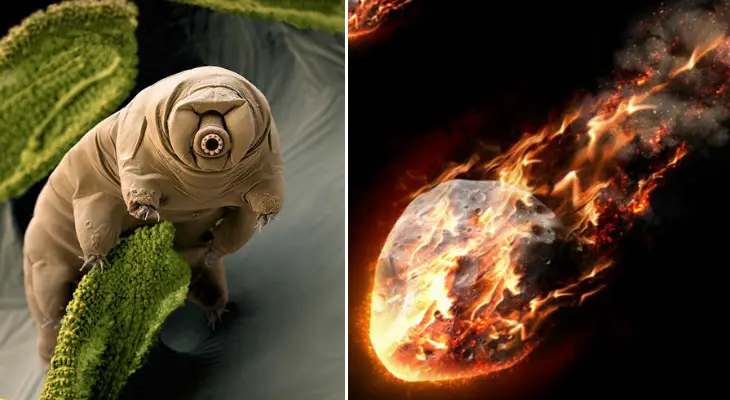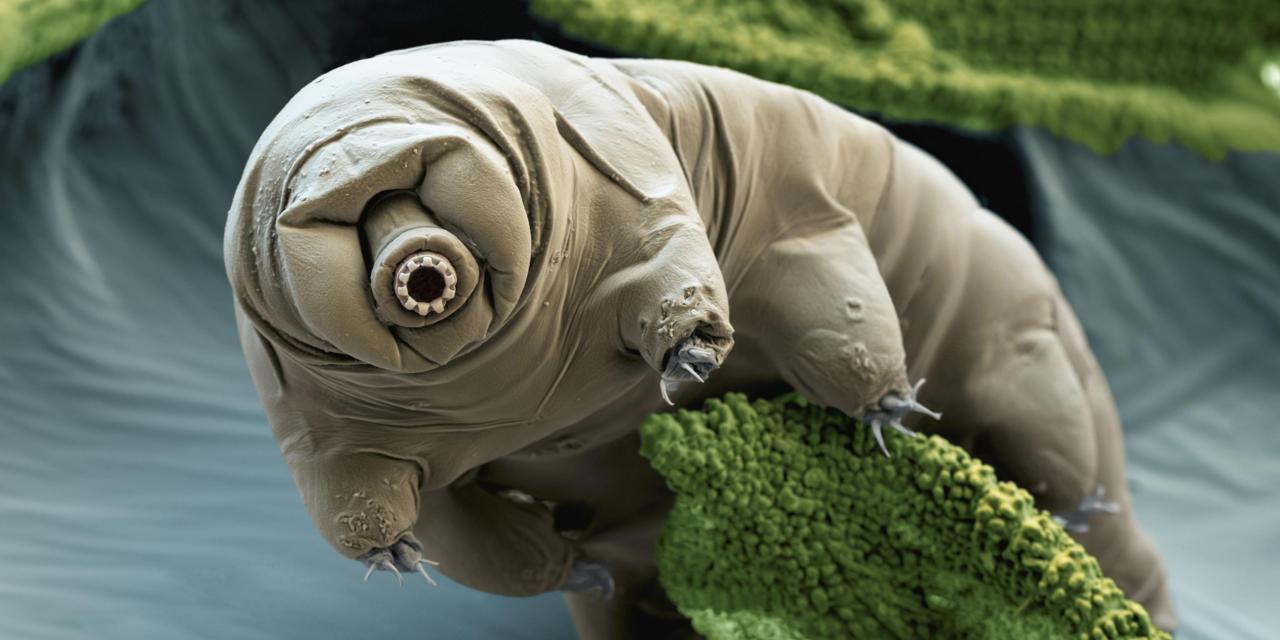Science & Tech
7 (Badass) Scientific Discoveries You Probably Missed in 2017

Though 2017, without a doubt, was a turbulent year, not everything that occurred was bad.
Sure, the US and North Korea came within inches of all-out war, and “fake news” became a buzz word that almost destroyed independent journalism, but advances were made in the scientific community.
From discovering that it snows on Mars to learning that a tiny creature known as the “tardigrade” will outlive us all, it’s been an interesting year for those in the scientific community.
Seven of the most notable scientific discoveries of 2017 follow..
1) Scientists witnessed two galaxies merging for the first time

Credit: Phys
In June, a large team of astronomers observed something that has been in the works for longer than two decades: a pair of orbiting supermassive holes, roughly 750 million lightyears away from Earth.
As Science Alert reports, the phenomenon occurs when two galaxies merge. Until this year, however, there was no evidence of it ever happening. Fortunately, the theory is now an established fact.
2) The ‘water bear’ will survive us all

Credit: BBC
Earlier this year, scientists determined that the tardigrade — a chubby “water bear” (Milnesium tardigradum) — will be the last surviving creature on the planet. This is because the bizarre — yet oddly cute — creatures are nearly indestructible.
Not only can tardigrades survive being desiccated, they can withstand extreme heat, extreme cold, and even the vacuum of space. On a positive note, this means cockroaches won’t outlive us all.
3) Life may have come from meteorites

Credit: National Geographic
Research published in October of 2017 suggests life on Earth started as a result of meteorites striking the Earth, then landing in small, warm ponds. Reportedly, this kick-started a chemical chain reaction that led to the very first bit of genetic code existing on the planet.
According to scientists from McMaster University in Canada and the Max Planck Institute for Astronomy in Germany, the development happened just a few million years after the Earth was cool enough for water to form. How neat!
4) It snows — on Mars

Credit: Space Answers
That’s right, the Red Planet has its own version of “snow.” According to a new study, when the sun goes down and temperatures plunge, Mars experiences intense snowstorms which are generated by gusts of wind.
Using data sourced from NASA’s Phoenix lander in 2008, researchers determined that radioactive cooling triggers a rapid escape of heat from the atmosphere. This, in turn, causes the icy Martian clouds’ temperatures to plummet quickly, sometimes, by as much as 4 degrees Celsius per hour.
Science Alert reports, “With hot air rising from the surface combining with colder air masses descending from above, strong winds of up to 10 metres (32.8 feet) per second end up carrying snow downwards suddenly – a phenomenon called microbursts.”
So there you have it. After Mars is colonized, perhaps there will be an opportunity for a White — albeit temporary — Christmas.
5) This 100-year-old drug benefits autism

Credit: PIxnio
In May, a small clinical trial in the US showed that a 100-year-old drug called Suramin can improve the symptoms of autism spectrum disorder (ASD) in children.
Though Suramin is typically used for sleeping sickness, it was tried in a pilot study on a group of boys with ASD. The effects were incredible. After just one dose, the boys’ ASD symptoms significantly improved. For obvious reasons, this study made headlines.
6) A breakthrough was made in diabetes research

Credit: Medical Daily
In April, researchers discovered a brand new type of insulin-producing cell which was hiding “in plain sight within the pancreas.” Reportedly, the “virgin beta cells” could offer a new route for regrowing healthy, mature beta cells.
Scientists are hopeful the discovery could lead to improved understanding of the disease, as well as a treatment for type 1 diabetes.
7) Newly-developed invention pulls water from “thin air”

Credit: Shutterstock
Thanks to researchers at MIT and the University of California, Berkely, we finally know how to pull water out of thin air. As Ranker reports, the scientists developed a device that pulls water out of the air in weather conditions with a minimum 20 percent humidity.
The solar-powered device uses a metal-organic framework which is made of zirconium and fumarate. This allows it to suck water vapor from the air we breathe.
Amazingly, the prototype could pull three quarts of water in 12 hours — all while sitting in an area with 20 percent to 30 percent humidity. The invention could change the lives of millions of people who lack access to clean, safe water.
What are your thoughts? Please comment below and share this article!
h/t Ranker, Science Alert
Typos, corrections and/or news tips? Email us at Contact@TheMindUnleashed.com
